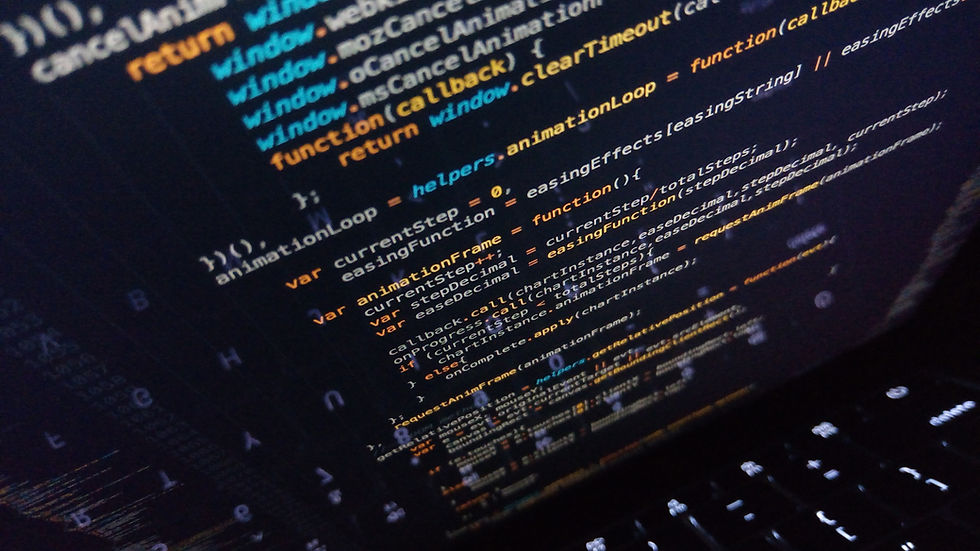Old Data, New Discovery: Mineral Prospectivity, AI, and the Geological Data Scientist
- Diana M. Benz, Ph.D.

- May 20, 2025
- 5 min read
Updated: Jun 5, 2025
In May 2017, I had just finished defending my PhD thesis. The edits were done within a week — so much for it taking a month. I decided to take a break and drive south to visit family I hadn’t seen in a while.
Of course, I packed my laptop. I had a client gearing up for the field season and it was time to dive into my first post-grad prospectivity challenge.
I started with what I knew best: statistical analysis of regional geochemistry — something I’d spent years honing during my PhD. From there, I added in all the relevant pre-competitive information: geology, satellite imagery, geophysics, historical records, land-use restrictions (because you can’t explore inside a park), and anything else that could affect exploration potential or development risk.
By the end, I had 6 prospective footprints mapped out across a 400 km corridor — each one paired with 1 to 3 day-long tracks designed for field crews to follow. These tracks weren’t just lines on a map. They were safe, efficient, data-driven routes that had the best chances for a mineral discovery while also safely avoiding sharp ridgelines and frustrating sampling in valley bottoms choked with brush.

Fast forward to 2025. One of those footprints is now fully staked.
It makes sense. That area was always the most promising, with clusters of MINFILEs: three developed prospects, thirteen prospects, and thirteen showings back in 2017. Today, that footprint holds the same three developed prospects, two more prospects for a total of 15, and ten new showings for a total of twenty-three.
What really stood out, though, was this: the current tenure holder sent crews to sample along one of the ridge-top tracks I had placed years ago – likely following the same gossan I had picked up in satellite imagery. And now? There’s a new MINFILE showing directly on the northern-most track I had proposed back in 2017.

Finally, some ground-truthing of my model.
While soil sampling the track, they collected a subcrop grab sample with 1% copper, an angular float sample with 0.1 g/t gold and 4.5% copper, and soil samples with gold values ranging from 20 to 71 ppb, silver from 1500 to 6000 ppb, and copper from 27 to 370 ppb.
Here’s the twist: the regional geochemistry I used didn’t report copper. The data was decades-old and based on INAA assays that excluded it entirely. That 20-kilometre-wide footprint was defined by an arsenic-antimony association that had a minor association with gold. The current operator staked the area for gold — which fits the historical MINFILE records — and even mentioned arsenic anomalies in their XRF soil data. And yet… copper and silver turned up.
This is where things get complicated. To verify my model, I needed to look a bit closer at the samples.
The soil samples collected along my track were described inconsistently. One crew member went north and called their material “C horizon.” The other went south and logged it as “B horizon.” Both were sampled at similar depths — 10 to 30 centimetres — but the track is in high-elevation, talus-dominated terrain. Based on personal experience and satellite imagery, true "B" and "C" horizons likely don’t exist there.
The material was consistently described as angular and was likely talus, not soil. And this isn’t a knock on the samplers — they used appropriate soil sampling methods, wrote detailed descriptions, and were consistent. Unfortunately, this kind of mislabelling happens a lot. It’s part of a broader issue in the industry: field skills are no longer consistently taught, and as a result, a lot of important practical knowledge is disappearing. But that’s another story.
It’s tempting to stop at the assay numbers and call it a success. But real understanding takes more than that:
— First, there was an obvious issue with traditional soil horizon labels
— This needed to be cross-checked with field photos, if available
— Testing could be done using depth and grain size as proxies
— Elemental ratios could also be used to compare against depth to understand provenance
This would lead to reclassifying the samples into subsets based on these criteria before running further statistics or drawing conclusions, because how the “soil” material developed will affect element ratios and concentrations, potentially leading to spurious results if different materials are interpreted together.
All of this reminds me how difficult it can be to develop robust AI models for mineral exploration.
There’s a lot of buzz around machine learning and automated prospectivity mapping. And while the tech is promising, most models today rely heavily on pattern recognition designed to create large blobs and blocks often too broad to verify — matching rock types and structures similar to where mineralization is already known. But, critical factors like scale, water bodies, land status, accessibility, and sampling issues are often missed. Mineral exploration AI models are currently great at recreating the past, but not so much at identifying genuinely new targets in under-sampled regions.
That’s where a Geological Data Scientist steps in.
It’s not just about running models. It’s about building workflows that respect statistical assumptions, correct for sampling biases, incorporate nuanced geochemical signals, and respect the realities of fieldwork. It’s about turning AI into a useful partner that answers a specific question — not a black box input with general ideas and a lack of understanding of what the model is actually answering.
Looking back at this early model — and seeing it partially validated in the field — has been a powerful reminder that even with limited data, there’s value in integrating different types of information, thinking spatially, and keeping field crews in mind when designing targets.
And the other five untouched footprints I mapped back in 2017? Still helicopter-only. Still without new MINFILEs. Still waiting.
To me, they’re not blank spots. They’re the perfect testing ground for the next generation of exploration tools — ones that aren’t just built to mimic what we’ve already found, but to discover what’s next.
If you’re working with legacy data, greenfields terrain, or thinking about how to blend AI with real-world geology — I’d love to connect.
About the Author
Dr. Diana Benz has 28 years of experience in the mineral exploration industry searching for diamonds and metals in a range of roles: from heavy minerals lab technician to till sampler, rig geologist, project manager and business owner/lead consultant. She has a Bachelor of Science in General Biology, a Master of Science in Earth Sciences researching diamond indicator mineral geochemistry, and a PhD in Natural Resources and Environmental Studies using geochemical multivariate statistical analysis techniques to interpret biogeochemical data for mineral exploration. Diana has conducted fieldwork in Canada (BC, NWT, YT and ON) as well as in Greenland. She has also been involved, remotely through a BC-based office, in mineral exploration projects in South America, Africa, Eurasia, Australia and the Middle East. Diana owns Takom Exploration Ltd., a boutique geological and environmental firm focused on metal exploration in BC and the Yukon.







Comments